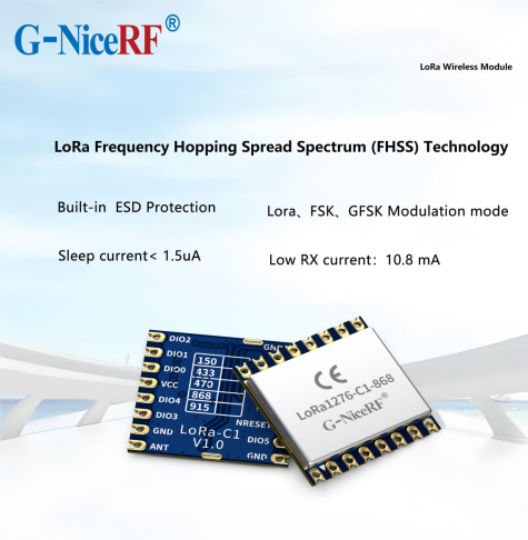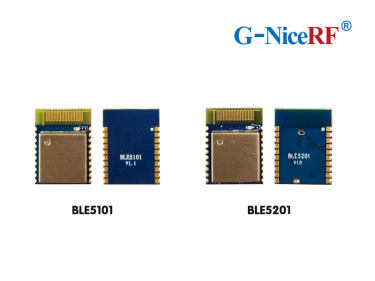How to improve the transmission distance of rf modules
Adjust the power module
From the power module side, rf modules are quite sensitive to power module noise, especially to glitch voltages and other high-frequency harmonics. If proper power supply decoupling is not adopted, voltage glitches on the power supply line will be caused, which may reach the RF power supply pin and affect the RF signal.
The rf module is also a load and needs to dissipate a certain amount of power consumption. When selecting the power supply, it is necessary to consider whether the power supply capacity of the power supply is sufficient for the rf module and other power-consuming units, and at the same time ensure a certain margin (at least 30% margin).
Therefore, when planning wireless transmission products at the beginning, make a little adjustment in the power supply, and select a power supply chip with a small ripple coefficient and a suitable load current as the power supply unit of the rf module to ensure the stability of the wireless transmission system. The transmission distance will be farther.
Adjust the transmitter and receiver
First of all, you need to consider the application scenario and determine the distance to be transmitted; if you need to perform wireless transmission of at least 7~8km, it is recommended to use at least a rf module with a transmit power of 30dBm (1W) and high receiving sensitivity, that is, whether the rf module has a power amplifier. (PA) and low noise amplifier (LNA), otherwise long-distance wireless transmission cannot be achieved.
Adjust the antenna
The antenna communication gain of the wireless communication module system is equal to the sum of the transmit power of the rf module and the gain of the antenna, so the gain of the antenna has a great relationship with the transmission distance of the rf module. When the module and the antenna are matched, the higher the gain of the antenna, the longer the transmission distance of the rf module. The general small suction cup gain is only about 2.0dBi, and some better outdoor large antennas can achieve a gain of about 5dBi. If the effect of data transmission with a low-gain antenna and a rf module is unsatisfactory, an antenna with a higher gain can be replaced, and the rf module will transmit farther. At the same time, it is also necessary to pay attention to the directionality and installation method of the antenna. The antenna should be erected as high as possible, and the antenna connected to the rf module should be placed in the same horizontal plane and parallel state, so that the sensing surface of the wireless signal transmission and reception is the largest, and the transmission and reception The received electromagnetic wave signal strength is the largest, so that the wireless transmission distance is longer.
Adjust the transmission path
The wireless data communication of the rf module is realized by the linear transmission of wireless electromagnetic waves in the air, so the occlusion of obstacles has a great influence on the wireless transmission, especially the obstacles of metal objects, which not only block the wireless transmission signal, but also absorb the wireless transmission. And reflected electromagnetic wave signal, reduce radiation efficiency. Therefore, the biggest obstacle to wireless transmission is actually metal, houses, woods, grass, sea level and other objects that can block.
Adjust working frequency
Wireless channels are relatively crowded, especially the ISM frequency band. During the actual installation of communication equipment, spectrum surveys can be made on the local electromagnetic environment to select relatively “clean” frequency points to avoid unnecessary interference. At the same time, strict compliance with Local laws and regulations for frequency planning.
Restructuring
For the case where the antenna is placed in the casing, it is suggested that, if the structure allows, placing the antenna outside the casing can increase the radiated signal strength and increase the transmission distance. Under the conditions that the structure does not allow, adjust the matching between the antenna and the module to increase the gain of the entire transmission system.
In general, the rf module should achieve the ideal wireless transmission effect:
1. Do the preliminary planning and selection, mainly for the power supply and the rf moduleto be used.
2. Elevate the antenna placement point at both ends of the transceiver or offset the placement point of the antenna to reduce the occlusion of obstacles, reduce the attenuation of electromagnetic wave signals, and reduce the blind area of wireless signals.
3. It is recommended that the antennas of the transmitter and receiver be placed in the same horizontal plane and parallel.
4. Use a high gain antenna that matches the rf moduleand the user's application scenario.
 +86-755-23080616
+86-755-23080616
 sales@nicerf.com
sales@nicerf.com
Website: https://www.nicerf.com/
Address: 309-314, 3/F, Bldg A, Hongdu business building, Zone 43, Baoan Dist, Shenzhen, China


 English
English







